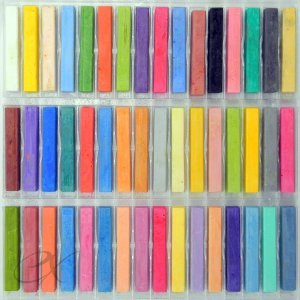Chalk pastels, sometimes called pastels chalk, are an excellent choice for art work. They are easy to use and mistakes can be easily removed. Art chalk pastels are versatile and can be used to produce a variety of textures and colors.
Types of Chalk Pastels

Natural chalk is produced by underwater organisms and is mostly white, though at times can be grayish or red depending on the mineral deposits. Today, synthetic materials can mimic the properties of chalk. Chalk, whether natural or synthetic, is an important ingredient in hard and soft pastels.

Soft chalk pastels also contain water, pigment and a smaller amount of artificial binder or chalk. As the name implies, these pastels are soft and malleable and create a smooth, smudgy lines on a canvas. They don’t mix on a palette, so it is recommended that an artist have many shades available. However, soft pastels blend when on the paper or canvas.

Hard pastels sticks are chalk, water and pigment put together. Colors are washed out due to the white chalk and become pale. When used in art paper, these pastels create sharp lines. They can’t hold a point like a pencil, though. Art made with hard pastels look like charcoal or soft pencil work in look and consistency. Hard pastels work well when drawing details.

Pastel pencils use chalk-based pastel in their core instead of lead as regular pencils. Because of this, they can be sharpened with a standard pencil sharpener. They work well when drawing fine lines.
Oil pastels attempt to achieve the look and texture of oil paints rather than the dry look of chalk. They use liquid binders like waxes and oils to hold pigment in the form of a stick. Because of their consistency, they can be mixed in canvas or palette much like regular paints. The color they produce is usually more vibrant thank soft or hard pastels.